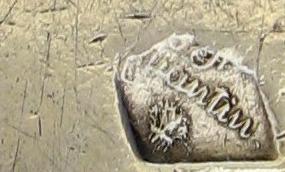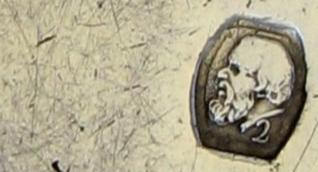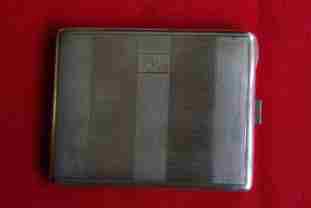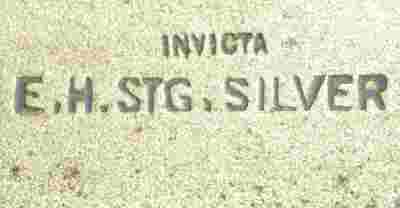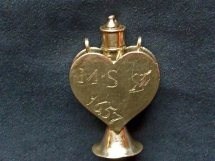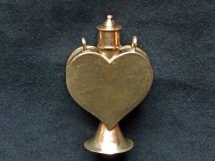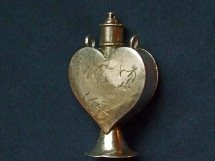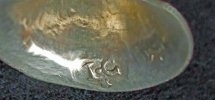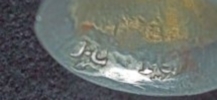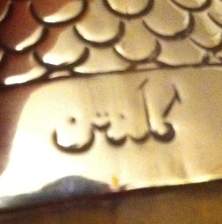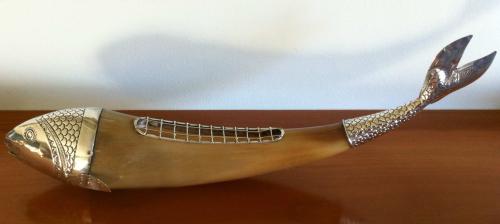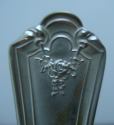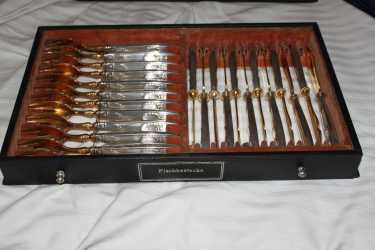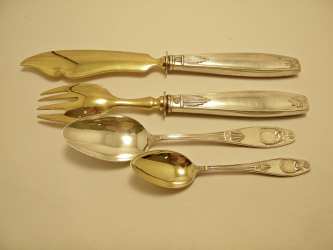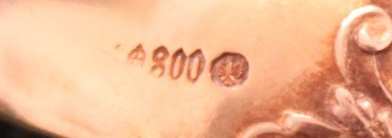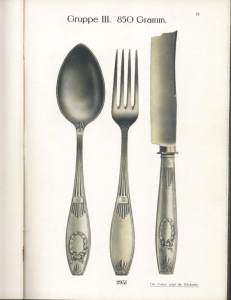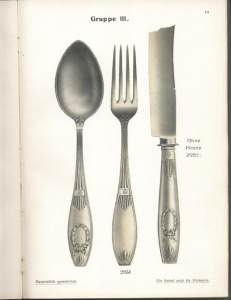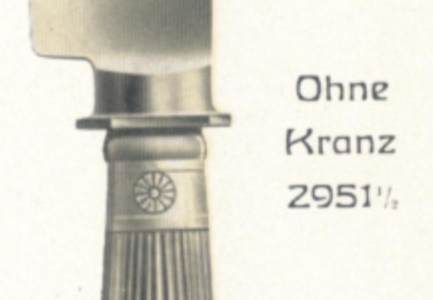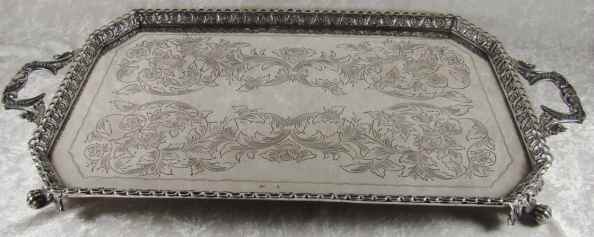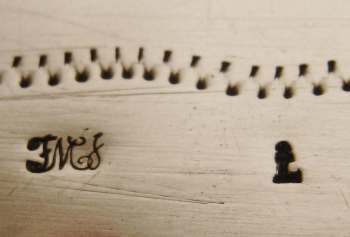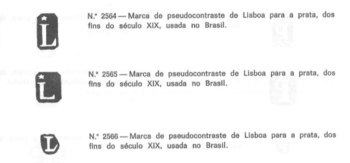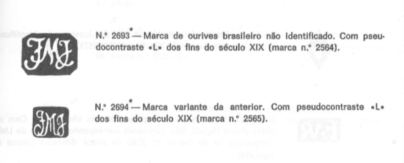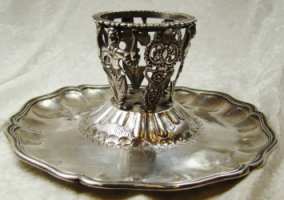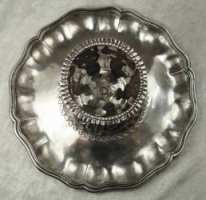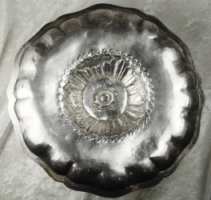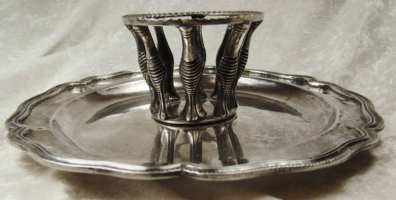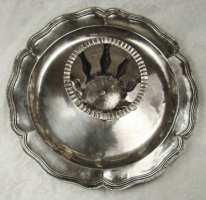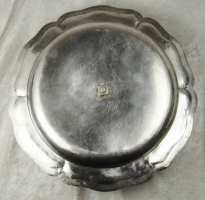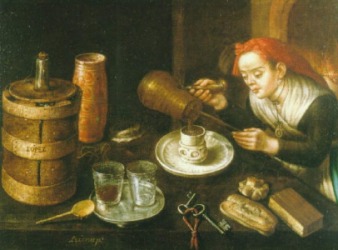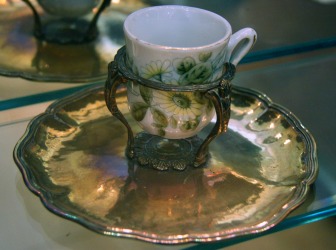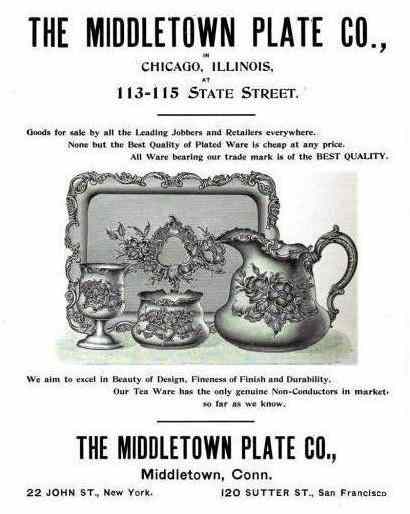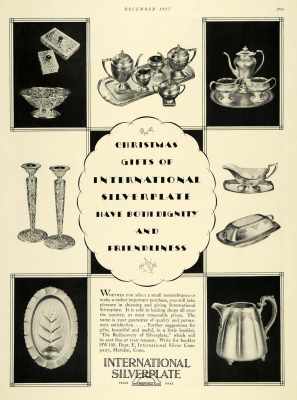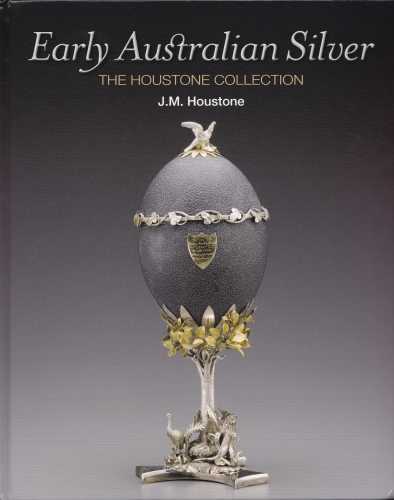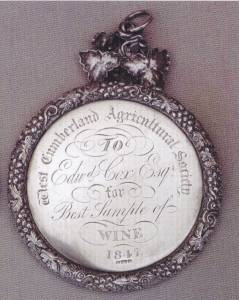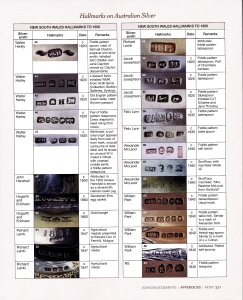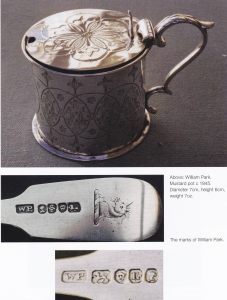 newsletter # 104 January 2013
newsletter # 104 January 2013www.ASCASonline.org SITE MAP
email: silverassociation@yahoo.it
YOUR GUIDE TO JANUARY NEWSLETTER:
articles
new
members
members' window
|
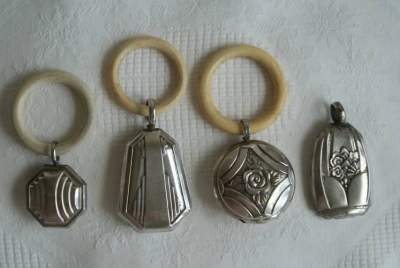
Katherine Palthey presents:
|
New members
Welcome to new ASCAS members:
David Nunnerley Boddy - South Africa
Anne Marie Kuhne - USA
William Murphy - USA
Robert Ringold - USA
Clive Taylor - England UK
|
top page -
page map |
Members' Window # 104
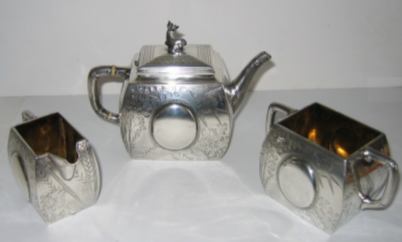
Giovanni Ciceri presents:
|
Mail to ASCAS: e-mail silverassociation@yahoo.it
Robert Massart writes:
... Maybe that one of the members knows the name of this French
silversmith J .…antin (ref. attached pictures).
The mark dates from the period 1819-1838 and belongs most
probably to the region of Nantes.
I would be grateful to obtain any possible info related to this
departmental silversmith.
Thanks in advance and kind regards,
Robert Massart
John Lawrence writes:
... I am trying to find some information on an Australian
silversmith, Edwin Harrop.
He seemed to have been active in the 1930's.
I have a silver cigarette case, marked INVICTA E.H. STG. SILVER.
A friend has what we believe to be a cigarette box with a wooden
liner marked EH STERLING SILVER and JULY 1933.
There is a napkin ring in the Powerhouse Museum in Sydney,
referenced "2002/81/12 Napkin ring, sterling silver, Magnus
Goldring incorporating Edwin Harrop for Hardy Bros, Sydney, New
South Wales, Australia, 1920 – 1930"
Even with this we have been unable to find any information
concerning Edwin Harrop.
I tried a search on your database with no joy.
If you or any members of ASCAS can help, that would be great.
Have a great day,
John Lawrence
Magnus Goldring was listed in 1895 as representative of
Edwin Harrop. Edwin Harrop senior died in 1894. In 1915 his son
Edwin George Harrop disposed their entire Sydney operations to
Magnus Goldring. After his death (1918) his sons Harold and
Leslie Goldring undertook the management of the family business
that became a proprietary company in 1957. After the death of
Leslie, the business was conducted by Harold Goldring and his
two sons Magnus George and Kenneth. The present managing
director of the company is Stephen Goldring (son of Magnus
George and great grandson of the founder).
Jolyon Warwick James
Bill Poynton writes:
... This piece has recently come into my possession. I think
it's a love token which, in some ways, this does appear to be.
It is very similar in shape to the early Hovesvansaeg from Scandinavia, quite small.....measuring
5cm x 3cm across the heart shaped body. It is marked underneath
the foot only with the maker's mark I.C (mullet below), struck
three times and the maker's mark is typically English.
There is such a mark in Jackson's registered c. 1640 in London,
but I'd hesitate to categorically confirm this as a London piece.
I wondered if any members could be helpful?
Many thanks
Bill Poynton
Roland Minlabbe writes:
... I was wondering if you could help me with the meaning of the
marks of this teapot.
Thanks for the help
Regards
Roland Minlabbe
Your teapot is silverplate made by Roberts & Belk –
Sheffield (see my website at
http://www.silvercollection.it/electroplatesilverQR.html.
The AI mark is a quality symbol (see my website at
http://www.silvercollection.it/dictionarysilverplatesymbols.html
). In the mark is present a crown. This signifies that your
teapot was made before 1895 (when the use of the crown in
silverplate objects was forbidden).
Giorgio Busetto
William Coultas writes:
... I need your help in identifying an interesting item of
silver.
The main body is of a horn (not sure what type it is), the metal
has been tested as silver. I have been told it would be used to
put flowers in and that it is possibly Arabian as there is an
inscription that I can not read.
If anyone can help to date the item or tell me what the
inscription says or just tell me more about it I would be very
grateful.
Thanks
William Coultas
Replies to questions
Renata Camozzi
receives these answers about her mysterious flatware piece
(see December 2012 Newsletter)
Oskar M. Zurell writes:... The shown fork is an Olive spoon ...to serve getting also the ever
last olive out of a conserve – or other kind of mixed pickles,
like silver onions … It seems to me it's the International
Silver Co. (Plated) Ashland pattern, introduced in 1914.
Oskar M. Zurell
Malcolm Stander writes:
... It's a spoon for removing olives from container -can
spear it or scoop it
Malcolm Stander
Roberta Parker writes:
... The spoon with the cut out bowl Ms. Camozzi enquired
about is an olive spoon. The cut out bowl allowed for the brine
to drain from the olives. They were made with long handles for
ease in getting the olives from a tall container, or shorter
handles better suited for use with a bowl or shorter container.
The pattern would suggest a date of the 1920's or 30's.
Roberta Parker
Katy Galewski writes:
... Renata Camozzi's photo in December's newsletter is of a silverplated olive fork. It is in the 1914 Roger & Bro. pattern Ashland.
However, when looking for information on the fork, I discovered that some olive forks are referred to as "ideal ".
Can someone
explain why some olive forks are called "ideal " and others are not?
Katy Galewski
George L. Lee, III
receives this answer about his flatware set
(see December 2012 Newsletter)
Oskar M. Zurell writes:
... as already supposed by Giorgio Busetto, it's made by
Peter Bruckmann & Söhne AG in Heilbronn, Germany.
The Coffee spoon and the Dessert spoon is made in the pattern
'295'(in Germany usually named 'Muster' or 'Modell' ),
introduced in the market in 1902. If you look to the added
images from sales catalogues (which are from around 1905 and
1909), then you would see the number '2951'. That was usual too;
but in reality was the last digit '1'= table spoon, '2' = table
fork, '3' = table knife, ..., '11' = Dessert spoon, ..., '21' =
large Coffee spoon, ... The Fish fork and the Fish knife are
made in the haft version –for reason of different possibilities,
e.g. front part engraved, or flat, made in Silver, or German
Silver ... these all have got different digits.
The pattern was made in the so called 'weight group' of 850
grams; the signification is that 12 table spoons or 12 table
forks are made from 850 grams of silver alloy = around 71 grams
per piece = around 57 grams fine, if the fineness of the alloy
was .800 (as German minimum standard).
It was also possible to be made in each other fineness above
.800, like .830, or 900, or 950 ...
There was, a short while after the introduction, a slightly
different pattern without Monogram frame (called 'Kranz').
That's the pattern number '2951 ½' (in the image is mentioned
only the possibility of 'without frame'). The indication of
'1/2' stands in general for differentiations; that could be a
little bit simplified pattern, or made in a lower 'weight group'
= thinner = less expensive in sales price ...
Oskar M. Zurell
Debbie Rindge
receives this answer about her tray
(see December 2012 Newsletter)
Oskar M. Zurell writes:
...the tray is from the end of XIX century; the maker "FMJ"
isn't identified until yet. The used Pseudo-Assay-mark,
simulating 'Lisbon'-Assay, isn't crowned but topped by a
five-point star.
I suppose that the maker was a bigger silver hollow wares
factory (by three different punches in about one decennia),
possibly settled in Rio de Janeiro. The family name would start
with 'J', like e.g. Júnior, Jesualdo ...
Because I suppose that "FMJ" was an industrial - the "Câmara de
Comércio" from Rio de Janeiro could be one source for
identifications. Write a letter to them, with the images
included.
For reason that much of the older Brazilian Documents aren't
digitalized and so also not available in the internet, I must
place in this case the need of more research on lower priority;
sorry.
But now you've a 'map' and you could make your own steps. If you’ve
results, please inform the »ASCAS«. Good luck!
Source of the marks: 'Marcas de Contrastes e Ourives Portugueses'
ISBN 972-27-0773-6. Vol. I (XV century – 1887). 4th edition
(Reprint of 3rd ed. 1997), Lisbon.
Oskar M. Zurell
Debbie Rindge
receives this answer about her silver plates with a receptacle
holder
(see December 2012 Newsletter)
Luis Castelo Lopes writes:
...The plates with receptacle should be Spanish or Spanish
colonial and there are similar objects in both Spanish ceramic
and Chinese porcelain for the Spanish market, both made in the
late 18th and 19th century. They were used to contain a ceramic
"glass" for (very) hot chocolate, the Spanish name is "Mancerina"
but they are also known by a French name "trembleuse" (or the
"shaker"!). These objects appear in Spanish paintings, and
reproductions can still be bought in Spain. Below you see two
images of Mancerinas
Luis Castelo Lopes
David Dishart
receives this answer about his vase
(see December 2012 Newsletter)
Oskar M. Zurell writes:
...Maybe Mr. Dishart will be disappointed. The vase is
Plated! Not 'PLATA' - also that's stated on the object's surface.
The marks, I think so, are struck in South America – maybe to
deceive? Normally there had to be struck 'PLATEADO' or 'CASQUIÑA'
or something similar!
The vase is made by Wilhelm Binder in Schwäbisch Gmünd, Germany
– a factory of a higher level of cutlery and hollow wares.
Additionally they had later also a line of plated cutlery and
hollow wares.
From when on precisely they've start to use the 'FLOREAT' Trade
mark, actually I don't know – that needs some more research as
the internet actually could offer.
I suppose that the vase is maybe made between the two World Wars,
or after the Second one.
As already said, 'Floreat' is the registered Trade word-mark for
Plated products of Wilhelm Binder. That's the second and the
fourth mark from left. In the fourth mark the word 'FLOREAT'
would maybe in yours case nearly invisible? But the script 'f'
is so typical as it could be.
I add two images of a marks guide. Additionally there in the »f«
mark is horizontal positioned a foil – a symbol for sturdiness’.
Plated wares from Wilhelm Binder are exceptional good – that’s
my experience since decennia. Foil fighting – not softness of a
flower!
Oskar M. Zurell
"A PAGE per MONTH"
In this column we presents a page obtained from makers'
brochures, books, auction catalogs, advertising or whatever
other printed paper, related to silver, that may be of interest
for ASCAS members.
The images will be published at a "low resolution" level and for
private and personal use only
"A WORD per MONTH"
In this column we
present an abstract from a page of the "What is? Silver
Dictionary"
courtesy of


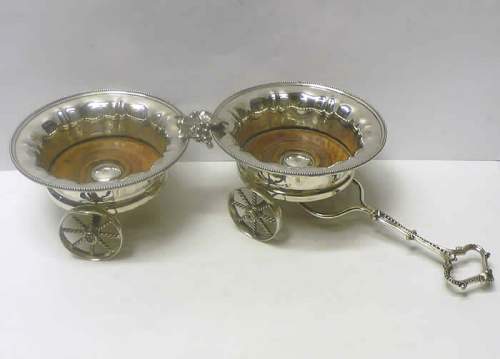
|
DECANTER WAGON
|
"A SILVERSMITH per MONTH"
In this column
we present marks, information and history of silversmiths and
silver manufacturers.
This column is published under the kind permission of Giorgio
Busetto's website

INTERNATIONAL SILVER COMPANYThe international Silver
Company was formed in 1898 by various independent New
England silversmiths that joined themselves together to
form a company that became the world's largest
manufacturer of silverware. The International Silver Co.
was organized with an authorized capital of $20,000,000
and included the following companies each of which had
won a place for itself in the silver world:
|
"A BOOK ON MY SHELF"
In this column we present books, new
or ancient, dealing with silver in all its aspects (history,
marks, oddities...). This isn't a "book review" but only a fair
presentation of some useful "tools" that anyone may have in the
shelf of his bookcase.
ASCAS members are invited to contribute to this column
(click to enlarge images)
In the "book on my shelf" of this month Jolyon Warwick James presents:
Early
Australian Silver – the Houstone collection, by J.M.Houstone. Is
published by Halstead Press, RRP $ 79.95 (postage extra)
Jolyon Warwick James is a silver historian, consultant and
valuer based in Sydney.
P.O.Box 142 , Woollahra, Sydney , 2025,. Australia
Tel + 61 2 9326 1319, Fax + 61 2 9327 2770
Mob 0412 042155 E-mail jolyonwjames@gmail.com

Custom Search
Closing our JANUARY 2013 edition of ASCAS Newsletter I hope you have appreciated its content.
Your comments, suggestions and advice will be of great help.
My thanks to Giovanni Ciceri, William Coultas, Katy Galewski, Jolyon Warwick James, John Lawrence, Luis Castelo Lopes, Robert Massart, Roland Minlabbe, Katherine Palthey, Roberta Parker, Bill Poynton, Malcolm Stander and Oskar M. Zurell for their invaluable contributions.
Giorgio Busetto
Secretary
ASCAS is a community of people having a common
interest in antique silver.
|

